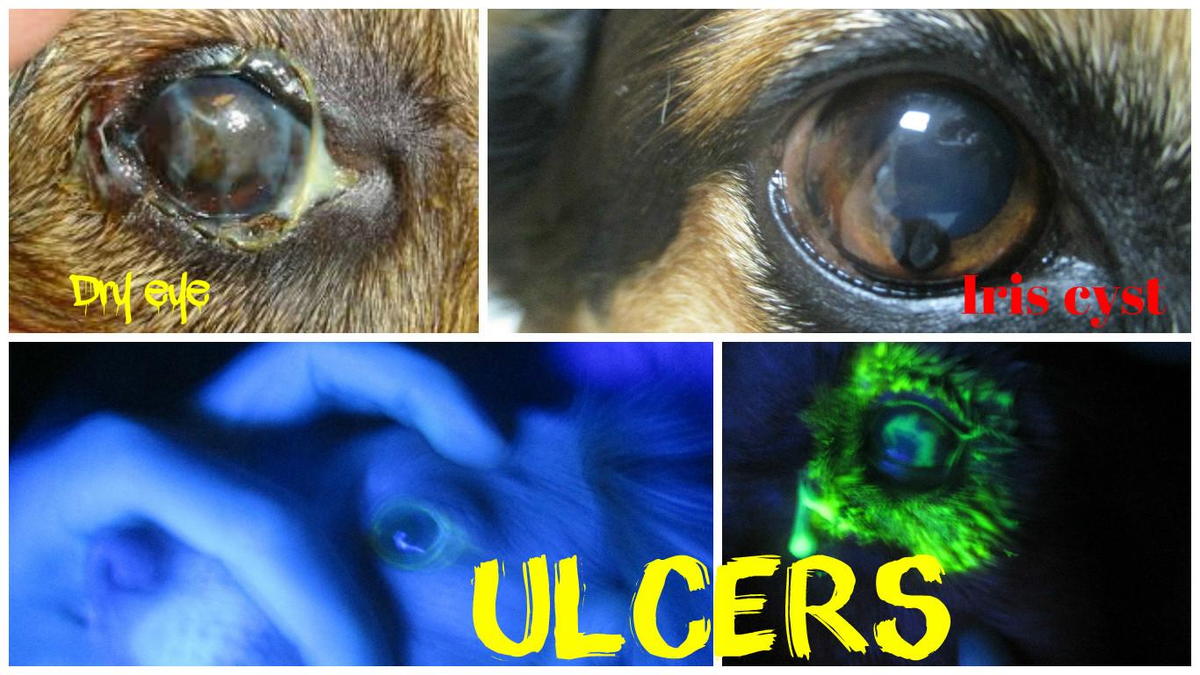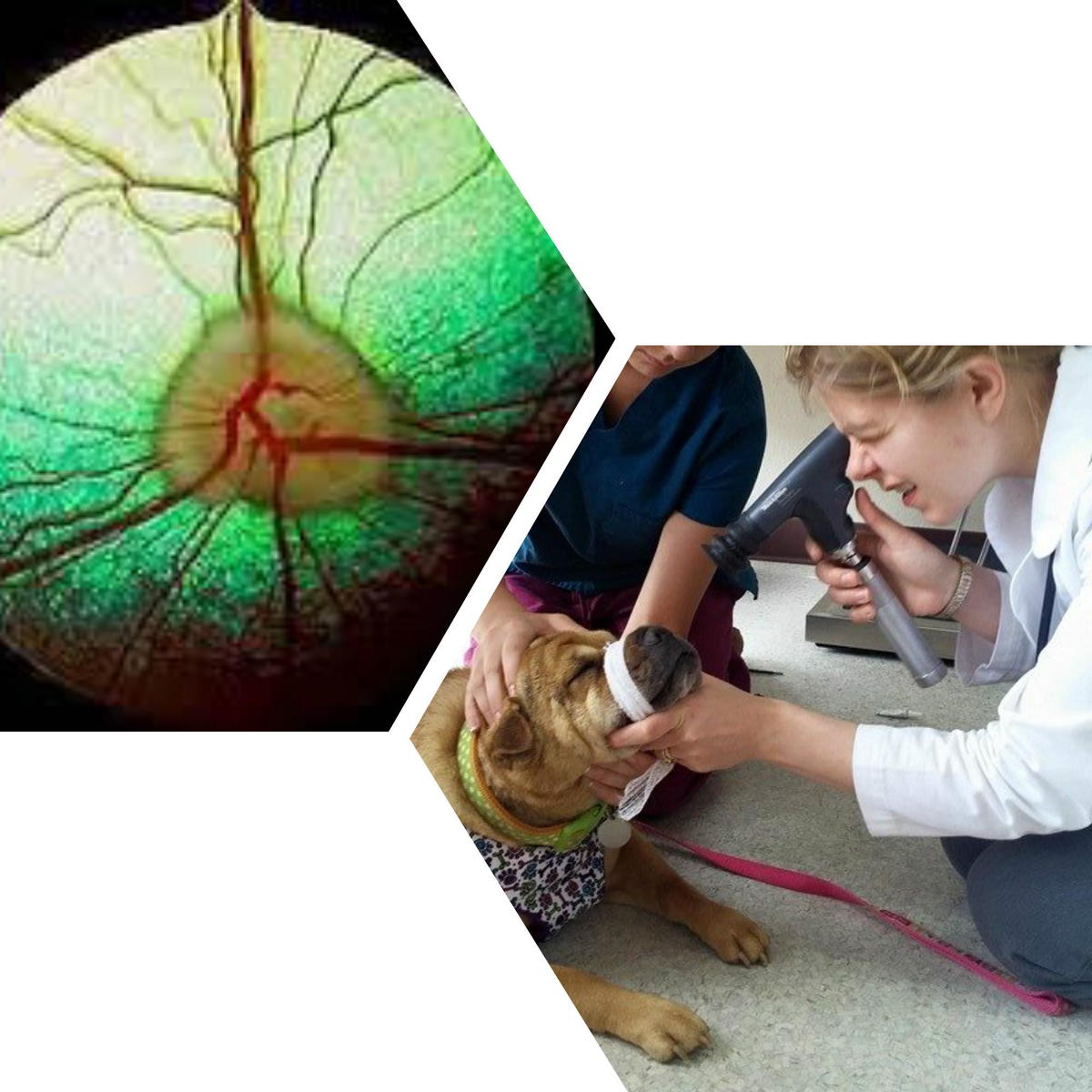- posted: Nov. 14, 2015
Been a while since I’ve done a blog post about cases. About 2 weeks ago our work week was full of eye issues, enough that I thought it deserved its own spotlight.
Corneal ulcers: We saw 3 of these in a row one day! A corneal ulcer is a scratch or other defect on the surface of the eye. We diagnose this by applying a fluorescent dye. In a normal eye, the dye has nothing to hold onto, but if there is a scratch or puncture, the dye floods into that space and really stands out. Makes for some pretty cool photography effects.

There are different kinds of ulcers – the pup on the bottom right had something called an “indolent ulcer.” These are common in Golden Retrievers / labs. It is where the surface of the eye loosens and doesn’t heal back properly. These ulcers can take longer to heal and require additional procedures.
Animals with ulcers typically have red, watery eyes and may be squinting. Ulcers require medical attention! A small scratch that becomes infected or is very deep (called a descemetocele) could result in loss of the eye.
Conjunctivitis: This is something we see very commonly in relation to allergy and usually this time of year in correlation to turning on the heater for the first time.
Bug-eyed: There are many things that can cause an animal’s eye to “bulge” out (and sometimes pop out). Last month we saw a sweet dog with lymphoma, cancer of the lymph tissue – it had affected one of his eyes, which we ended up removing (called “enucleation”) to provide relief. Animals can also get glaucoma, which can result in a bug-eyed look.
Dry-eye: The tears produced by animals contain both an oil and a watery component. When they don’t produce enough tears, the oil component takes over – resulting in goopy, cloudy eyes. Dry eye can lead to other conditions (such as ulcers!) and should be treated.
I have fun with the fundus! The fundus is the back of the eye, and it’s my favorite part of my exams – it’s like a fingerprint, everyone is different. We perform fundic exams on all our patients so we can assess the optic nerve, tapetum (reflective surface), lens, and blood vessels. This is how we can diagnose cataracts, some infectious diseases, and longer periods of high blood pressure.
we can assess the optic nerve, tapetum (reflective surface), lens, and blood vessels. This is how we can diagnose cataracts, some infectious diseases, and longer periods of high blood pressure.
These are only a few of the more common eye problems we see in our animals. If your pet is experiencing redness, cloudiness, discharge, excessive tearing, or squinting – be sure to have it evaluated before damage is permanent.



